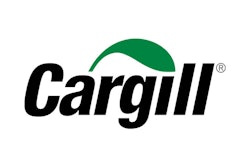The Manufacturers Alliance for Productivity and Innovation (MAPI) Foundation released groundbreaking research on the intersection of the opioid crisis and manufacturing, “Ignorance Isn’t Bliss. The Impact of Opioids on Manufacturing.” While many are forecasting U.S. manufacturing to return to its global dominance, the drug crisis is poised to be a drag on U.S. competitiveness.
“The opioid crisis has been a major public discourse for the past few years,” noted Jenn Callaway, VP of Research at MAPI and co-author of the report. “However, much of the coverage has been focused on family and community impact. While undeniably important, this research branches out and examines the effect and potential disruption to U.S. manufacturers – and the results demand action.”
Contributing factors:
- In 2015, the U.S. spent 2.8 percent of its GDP on the opioid crisis.
- The U.S. drug crisis is reducing the labor force and its productivity.
- Areas with higher opioid pain medication prescription rates have lower labor force participation rates.
- Drug addiction leads to productivity loss for employers.
- The U.S. drug epidemic is accelerating in communities with large manufacturing workforces.
- By the end of 2016, 70 counties were employing the largest amount of manufacturing workers and grappling with deadly addiction. Another 201 manufacturing-intensive counties were also seeing more than the national median of overdose deaths. Together 40% of the counties employing the most manufacturing workers were experiencing the worst of the drug crisis that year.
- In 2016, 11 of the states the 70 hardest hit manufacturing counties call home saw statistically significant increases in drug overdose deaths. They also generated 41 percent of manufacturing GDP.
- The drug problem is more acute within the U.S. labor force than other top manufacturing countries.
- In 2014, the U.S. drug overdose death rate per 100,000 was 6.96. That’s five times higher than Germany, sixteen times higher than Japan, nineteen times higher than China, and twenty-nine times higher than South Korea.
Manufacturing leaders who are interested in learning more about this research and discussing it with manufacturers facing these challenges can join MAPI at the ManufacturED Summit in Chicago, IL on May 22-24.
About the MAPI Foundation
The MAPI Foundation is a 501(c)(3) nonprofit subsidiary research organization of the Manufacturers Alliance for Productivity and Innovation. For more information, visit mapifoundation.org.























